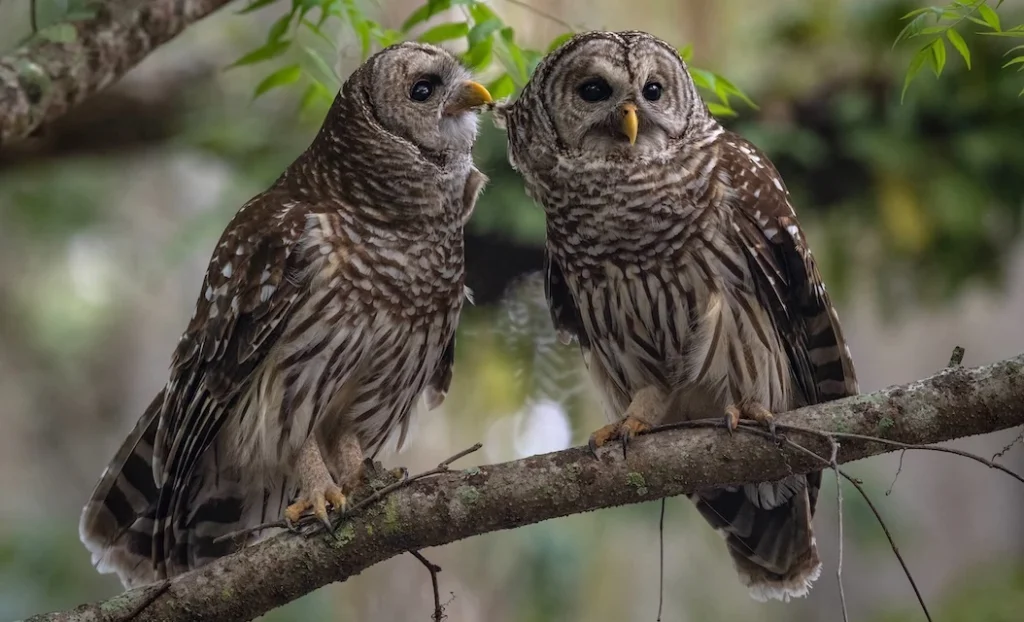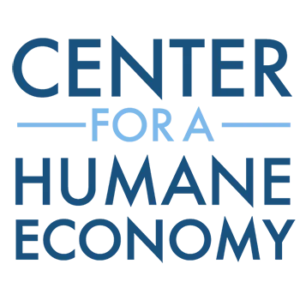NPS leaders in Oregon should not reopen wounds from ‘timber wars’ of the ‘80s and ‘90s and hurt local economies by driving away tourists
Seattle, WA — Today Animal Wellness Action and The Center for a Humane Economy called on superintendents serving Crater Lake National Park and Oregon Caves National Monument and Preserve to resist a plan by a sister agency, the U.S. Fish and Wildlife Service (USFWS), to participate in a scheme to kill almost half a million barred owls in the Pacific Northwest over the next 30 years. The USFWS filed a Record of Decision on barred owl management in late August, and just days ago, AWA and the Center filed a lawsuit in U.S. District Court in Seattle to block the overreaching and unworkable plan targeting a species protected for a century by the Migratory Bird Treaty Act.

The unprecedented scheme to kill barred owls — a species native to North America — has been initiated to reduce social competition between that species and its look-alike cousins, the Northern Spotted owl and the California Spotted owl. Spotted owls have experienced significant population decline over decades because of habitat destruction, particularly the harvesting of old growth forest. The groups claim in their filing that the plan, originally proposed by timber industry forest scientist, is not only ill-conceived and inhumane, but is also destined to fail as a strategy to save the spotted owl.
In recent days, the organizations that filed the federal legal action highlighted a deeply disturbing element of the plan: opening up 14 units of the National Park Service to owl hunting, which will persist for at least 30 years if the scheme is implemented as proposed. Two of those units — Crater Lake National Park in Klamath County and Oregon Caves National Monument and Preserve in Josephine County — are located in southern Oregon.
“This inhumane, unworkable barred-owl kill-plan is the largest-ever scheme to slaughter raptors in any nation,” said Wayne Pacelle, president of Animal Wellness Action and the Center for a Humane Economy. “By opening up 14 units of the National Park Service to owl hunting — including the iconic Crater Lake National Park — the whole plan becomes surreal. It has a zero percent chance of success, but it will produce an unheard-of body count of a long-protected owl species in our national parks and it will come with detrimental effects on other species.”
Barred owls have engaged in range expansion, which is a naturally occurring ecological phenomenon and it is a core behavioral and adaptive characteristic of many species of birds and mammals, including barred owls. Former USFWS wildlife biologist Kent Livezey noted, in a peer-reviewed paper, that 111 other native bird species engaged in “recent” range expansion, with 14 of them expanding over an area larger than the area where barred owls are moving. “To say that this plan is unprecedented is an understatement,” said Livezey, who is extensively published on spotted owls, barred owls, and range expansion of native bird species in the United States.
FWS’s plan calls for granting of “take” permits that allow volunteer hunters with little training in identifying barred owls to take to the forests to kill barred owls, including national parks and wilderness areas on national forests. The plan will result in mistaken identity kills of spotted owls and vast numbers of other owl species, who are generally nocturnal and living dozens of feet above the forest floor and in dense evergreen forests. The disturbance alone would have adverse effects on a wide range of species, along with the direct killing of so many other species. Night hunting of the owls is planned, increasing the risk of mistaken-identity kills.
The twelves other units to be opened to owl hunting are Olympic National Park, Mount Rainier National Park, and North Cascades National Park in Washington state and nine additional units in California. The units in California are Redwood National, Whiskeytown National Recreation, Muir Woods National Monument, Golden Gate National Recreation Area, Point Reyes National Seashore, Lassen Volcanic National Park, Sequoia & Kings Canyon National Park, Yosemite National Park, and Devil’s Postpile National Monument.
“Southern Oregon already went through traumatic and costly ‘timber wars’ over spotted owl protections during the 1980s and 1990s,” stated Tamara Drake, a southern Oregon resident and director of research and regulatory affairs for the Center for a Humane Economy. “There is still a lot of scar tissue over logging restrictions and the last thing we need is to reopen this wound.”
“Allowing owl hunting in Crater Lake and Oregon Caves has the potential to disrupt the millions of dollars generated in local economic activity,” she added. “Visitors to our amazing national parks and monuments will be turned off by owl hunting and go to other parks instead.”
Two-term Public Lands Commissioner of Washington state, Hilary Franz came out in opposition to the plan in a June letter of opposition. “I don’t believe that a decades-long plan to kill nearly half-a-million barred owls across millions of acres of land represents a solution that is absolutely viable, affordable or capable — in fact it raises an enormous amount of questions,” she stated on a June 20 webinar for Animal Wellness Action. “How can we prevent the surviving barred owls from simply recolonizing and repopulating the very areas we are trying to preserve? I think we can do better, and we have too many questions that need to be answered.”
Letters may be read here:
Crater Lake National Park
Oregon Caves National Monument and Preserve
The Center for a Humane Economy and Animal Wellness Action have built a coalition of more than 215 organizations opposing the USFWS barred owl kill-plan. That coalition includes more than 20 local Audubon organizations. The coalition also includes owl protection and raptor rehabilitation centers across the West.

